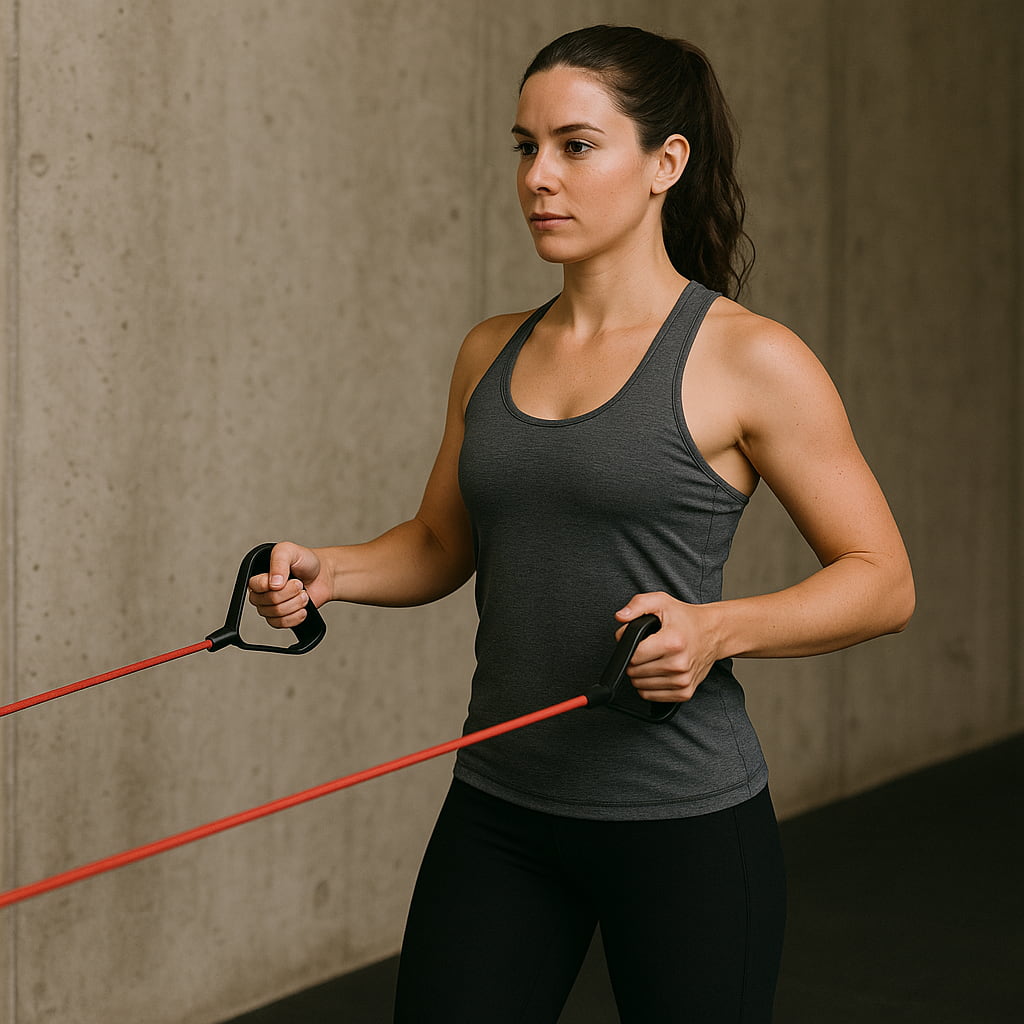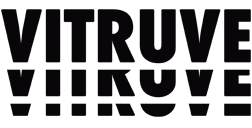1 de July de 2025
Band Rows: Exercise Guide, Tips and Benefits
Band rows are a versatile, joint-friendly back exercise ideal for building strength, improving posture, and enhancing muscular endurance. Whether you’re training at home, recovering from injury, or adding volume without heavy weights, band rows offer an accessible and effective solution for anyone looking to develop a strong upper body.
What Is a Band Row?
A band row is a pulling exercise performed using resistance bands instead of weights or machines. The movement mimics the traditional cable or barbell row, targeting the muscles of the upper and mid-back. Band rows are especially popular for their adaptability—resistance can be easily adjusted by changing band thickness or grip distance, and they require minimal space or equipment.
This makes them ideal for warm-ups, full workouts, or active recovery sessions.
How to Do Band Rows
You can perform band rows standing, seated, or anchored to a door, pole, or other stable structure. Here’s a simple standing band row variation:
- Anchor the Band: Wrap a resistance band around a sturdy post or anchor it in a door at chest height.
- Grab the Handles: Hold each end of the band with palms facing in (neutral grip).
- Step Back to Tension: Stand far enough back so there’s slight tension with your arms extended.
- Set Your Posture: Stand tall, core braced, chest lifted, and shoulders down and back.
- Row the Band: Pull the handles toward your torso, keeping elbows close to your body.
- Squeeze the Shoulder Blades: At the end of the movement, pinch your scapulae together before returning slowly to the start.
Perform 2–4 sets of 10–15 reps, focusing on smooth, controlled movement.

Benefits of Band Rows
- Improves Posture: Strengthens postural muscles to counteract slouching from prolonged sitting.
- Back and Shoulder Development: Targets rhomboids, traps, and rear delts for a stronger upper back.
- Joint-Friendly Resistance: Smooth tension reduces strain on joints and tendons.
- Portable and Scalable: Great for travel, rehab, or minimalist training setups.
- Helps With Muscle Activation: A useful tool in warm-ups or prehabilitation programs.
- Balances Push-Pull Training: Complements pressing movements to support shoulder health.
They also play a vital role in managing fatigue and reducing injury risk. To optimize your training, consider reviewing fatigue management strategies that help maintain performance and avoid overtraining.
Common Mistakes to Avoid
- Over-relying on Arm Muscles: One of the most common errors is letting your biceps do most of the work. This limits back engagement. Focus on initiating the pull with your shoulder blades and upper back.
- Shrugging Shoulders: Elevating the shoulders during the movement reduces back activation and may lead to neck tension. Keep shoulders down and away from your ears.
- Leaning Too Far Back: Using body momentum rather than muscle strength compromises form and reduces the effectiveness of the exercise. Maintain a stable torso and engage your core.
- Lack of Full Range: Avoid short, partial reps. Ensure you are fully extending your arms at the start and squeezing your shoulder blades at the peak.
- Uneven Resistance: If the band is anchored unevenly, one side may get more resistance. Make sure your setup is symmetrical and stable before beginning.
- Poor Tempo Control: Jerky or rushed movements reduce time under tension. Control both the concentric and eccentric phases for better results.
Use a mirror or record yourself occasionally to check your form and make necessary adjustments.
Variations of Band Rows
- Seated Band Rows: Sit with legs extended and wrap the band around your feet.
- Bent-Over Band Rows: Step on the band and pull from a hinged position.
- Single-Arm Band Rows: Great for isolating each side and correcting imbalances.
- High Anchor Rows: Target more upper traps and rhomboids by pulling from above.
- Superset with Pushups: Alternate pushing and pulling to maintain muscular balance.
These variations can be incorporated into any strength and conditioning routine. Learn more about proper training structures in this guide on strength and conditioning principles.
How to Include Band Rows in Your S&C Workout
Band rows are a flexible addition to any Strength and Conditioning (S&C) program. Their low-impact nature and ease of setup make them suitable across all training phases—from warm-ups and prehab to hypertrophy or active recovery.
Here’s how to incorporate them strategically:
- Warm-up Activation: Use high-rep band rows (15–20 reps) to wake up the scapular retractors before upper-body strength days.
- Accessory Work: Add them after compound pulling movements like barbell rows or pull-ups to increase back volume without additional spinal load.
- Push-Pull Pairings: Superset band rows with pushups, dumbbell presses, or overhead movements to promote muscular balance and shoulder health.
- Circuit Training: Include them in full-body resistance circuits, especially during deload weeks or when training at home with limited equipment.
- Rehab or De-load: Ideal for rebuilding pulling mechanics after an injury or tapering volume during light phases of training.
A typical weekly prescription might look like:
- 2–4 sets of 12–20 reps, 2–3 times per week, depending on your goals and training load.
For structured programming ideas, check out this guide on strength and conditioning principles.

FAQs About Band Rows
What do band rows work?
Band rows primarily target the upper and mid-back, including the rhomboids, trapezius, rear deltoids, and latissimus dorsi. They also engage the biceps and core.
Can you lose belly fat using resistance bands?
While resistance bands themselves don’t specifically burn belly fat, they support fat loss when included in a well-structured training and nutrition program by boosting overall energy expenditure.
What happens if I use resistance bands every day?
If you vary intensity and volume appropriately, daily use can improve muscular endurance and mobility. However, overuse without recovery can lead to fatigue or overtraining.
Do resistance bands get you toned?
Yes, resistance bands can help build lean muscle and reduce body fat, which contributes to a toned appearance—especially when combined with a balanced diet and consistent training.
Band rows offer a simple yet powerful way to build back strength, improve posture, and boost overall muscular endurance. Whether you’re working out at home or adding variety to your gym routine, they’re a smart tool for both beginners and advanced athletes alike.
